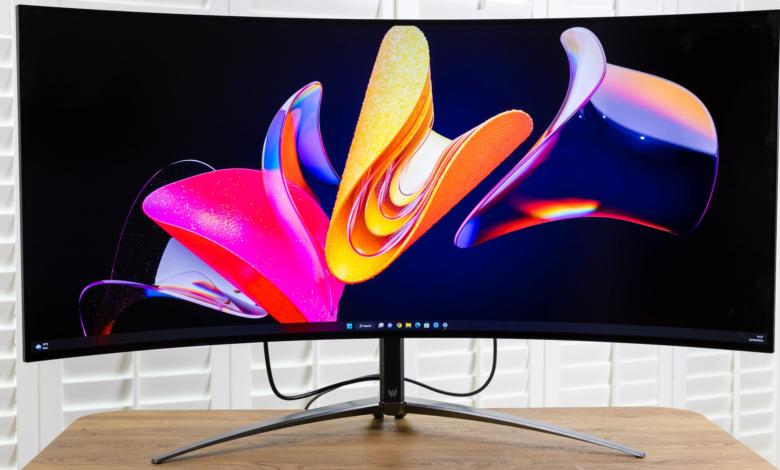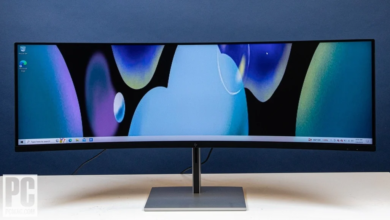Understanding Computer Monitors: A Comprehensive Overview

Understanding Computer Monitors: A Comprehensive Overview. In the fast-paced world of technology, computer monitors are essential to our daily activities. Whether used for work, entertainment, or gaming, these screens are the portals to our digital experiences. This comprehensive overview examines the various aspects of computer monitors, including their evolution, types, key features, and the future of display technology.
The Evolution of Computer Monitors
Early Days of Monitors
The history of computer monitors begins with cathode-ray tube (CRT) displays, which were bulky and heavy yet dominated the market for years. This section traces the development from monochrome CRTs to today’s sleek, high-resolution screens.
Transition to Flat Panel Displays
The shift to liquid crystal displays (LCDs) marked a significant technological leap. We will discuss how LCDs replaced CRTs, offering benefits in size, weight, and energy efficiency. Additionally, the section will explore other flat panel technologies like organic light-emitting diodes (OLEDs) and their contributions to the evolution of displays.
Rise of High-Resolution Displays
Improvements in resolution have been a hallmark of modern monitors. We will explore the transition from standard definition (SD) to high-definition (HD), Quad HD (QHD), and 4K displays, and their impact on providing a more immersive viewing experience.
Types of Computer Monitors
LCD Monitors
LCD monitors are widely used across various applications. This section covers different LCD panel types, such as twisted nematic (TN), in-plane switching (IPS), and vertical alignment (VA), highlighting their characteristics, benefits, and drawbacks.
OLED Monitors
OLED technology is known for delivering vivid colors and deep blacks by lighting each pixel individually. We will examine the unique features of OLED monitors, including their flexibility and potential future applications.
Curved Monitors
Curved displays are gaining popularity for their immersive viewing experience. This section explores the science behind curved screens, their benefits, and considerations for choosing a curved monitor.
Ultrawide Monitors
Ultrawide monitors offer an extended aspect ratio, appealing to professionals and gamers who desire a wider field of view. We will discuss the advantages of ultrawide displays for multitasking and gaming, as well as potential downsides.
Key Features and Specifications
Resolution
Resolution is a critical aspect of monitor quality. This section discusses common resolutions such as Full HD (1080p), Quad HD (1440p), and 4K (2160p), and their impact on image clarity, helping users choose the right monitor based on resolution needs.
Refresh Rate
Refresh rate is vital for gaming and video playback. We will explain the importance of refresh rates, the concept of frames per second (FPS), and how higher refresh rates enhance visual smoothness.
Response Time
Response time is crucial for gamers to minimize motion blur and ghosting. This section will describe response time and its significance, guiding users to select monitors with appropriate response times for different uses.
Panel Technology
Different panel technologies like IPS, TN, and VA offer varying color reproduction, viewing angles, and response times. We will provide a detailed comparison to help users make informed decisions based on their preferences and needs.
Connectivity Options
The variety of ports and connectivity options affects a monitor’s versatility. This section explores common ports like HDMI, DisplayPort, and USB-C, discussing their functions and catering to different user requirements.
Gaming Monitors
High Refresh Rates and Adaptive Sync
Gaming monitors have specific needs, such as high refresh rates and adaptive sync technologies (e.g., NVIDIA G-Sync and AMD FreeSync). We will discuss how these features enhance gaming by reducing screen tearing and stuttering.
HDR (High Dynamic Range)
HDR technology improves color reproduction and contrast ratios. We will examine its importance in gaming and entertainment monitors and its impact on overall visual quality.
Gaming Monitor Design
The physical design of gaming monitors affects user experience. This section discusses ergonomic considerations, bezel design, and the inclusion of RGB lighting in gaming monitors.
Professional Monitors
Color Accuracy and Calibration
For professionals like graphic designers and video editors, color accuracy is paramount. We will explore the importance of color calibration, wide color gamuts, and technologies like Pantone validation in professional monitors.
Ergonomics and Adjustable Stands
Professional monitors often feature adjustable stands to suit different working preferences. This section will highlight the significance of ergonomics in professional environments and the features that contribute to a comfortable workspace.
Multi-Monitor Setups
Professionals frequently use multiple monitors to boost productivity. We will explore the benefits and considerations of multi-monitor setups, including the use of ultrawide monitors and different panel types.
Future Trends and Emerging Technologies
MicroLED Displays
MicroLED technology promises revolutionary improvements with self-emissive pixels and superior image quality. This section will examine the current state of MicroLED development and its potential future impact.
8K and Beyond
As technology progresses, resolutions continue to increase. We will discuss the advent of 8K monitors and the potential advantages and challenges of these ultra-high-resolution displays.
Augmented and Virtual Reality Integration
The integration of augmented reality (AR) and virtual reality (VR) technologies with monitors is a promising development. We will explore how monitors may evolve to support AR and VR applications, enhancing the computing experience.
Sustainability in Monitor Manufacturing
Sustainability is becoming increasingly important in monitor production. This section will discuss innovations and efforts to create environmentally friendly monitors, including energy efficiency, eco-friendly materials, and recycling initiatives.
Conclusion
Computer monitors have evolved significantly from bulky CRTs to today’s advanced displays. Understanding the key features and specifications is crucial for making informed purchasing decisions. Whether for gaming, professional use, or general computing, the right monitor can greatly enhance the user experience. Looking ahead, emerging technologies and trends promise exciting developments in the realm of computer monitors. Stay tuned for the next chapter in the ever-evolving story of display technology.

